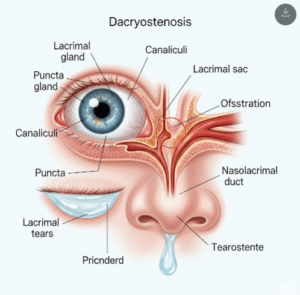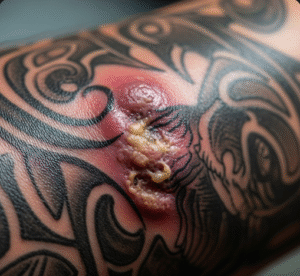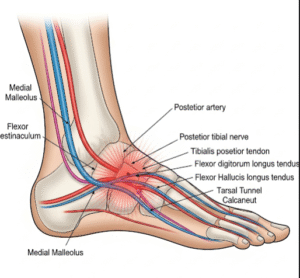Overview
Pituitary dwarfism, also known as growth hormone deficiency (GHD) or dwarfism due to hypopituitarism, is a rare condition in which the pituitary gland fails to produce sufficient growth hormone (GH) during childhood. As a result, affected individuals experience significantly slower growth and attain shorter-than-average stature. Despite reduced height, body proportions typically remain normal. With early diagnosis and treatment, children with pituitary dwarfism can achieve near-normal adult height and lead healthy lives.
What is Pituitary Dwarfism?
Pituitary dwarfism occurs when the anterior pituitary gland (located at the base of the brain) does not secrete adequate levels of growth hormone — a hormone essential for stimulating growth in bones and tissues. The deficiency may be isolated or part of a broader problem affecting multiple pituitary hormones (known as panhypopituitarism).
The condition can be congenital (present at birth) or acquired later in childhood due to injury, tumors, infections, or medical treatments affecting the pituitary gland.
Symptoms
Children with pituitary dwarfism often appear healthy at birth but show signs of slowed growth during infancy or early childhood. Key symptoms include:
- Markedly short stature for age and gender
- Slow or delayed growth rate (less than 5 cm/year after age 2)
- Normal body proportions (unlike other forms of dwarfism)
- Delayed puberty or underdeveloped sexual characteristics
- Increased fat around the abdomen and face
- Immature facial appearance or “baby face”
- Delayed tooth development
- Mild to moderate low muscle tone
- Possible low blood sugar in infancy
- Emotional or social challenges due to size differences
In cases involving multiple pituitary hormone deficiencies, symptoms may include fatigue, cold intolerance, or other endocrine abnormalities.
Causes
Pituitary dwarfism can result from various congenital or acquired causes:
Congenital Causes
- Genetic mutations (e.g., GH1 or PROP1 gene defects)
- Structural brain abnormalities (e.g., septo-optic dysplasia)
- Developmental failure of the pituitary gland
- Syndromic conditions (e.g., Turner syndrome, Prader-Willi syndrome)
Acquired Causes
- Brain or pituitary tumors (e.g., craniopharyngioma)
- Head trauma or brain injury
- Radiation therapy for cancer
- Infections (e.g., meningitis, encephalitis)
- Surgical damage to the hypothalamic-pituitary axis
- Idiopathic (no identifiable cause in many cases)
Risk Factors
Factors that may increase the risk of developing pituitary dwarfism include:
- Family history of growth hormone deficiency or genetic disorders
- History of brain trauma, surgery, or radiation
- Previous infections affecting the brain or pituitary region
- Congenital brain malformations
- Tumors involving the hypothalamus or pituitary gland
- Genetic mutations known to affect pituitary development
Complications
If left untreated, pituitary dwarfism can result in several physical, psychological, and metabolic complications:
- Severely short adult stature
- Delayed or absent puberty
- Infertility in cases with gonadotropin deficiency
- Social and emotional challenges due to growth differences
- Decreased bone density or delayed bone maturation
- Increased risk of cardiovascular and metabolic issues in adulthood
- Hypoglycemia and fatigue in severe deficiency
- Reduced quality of life without proper support and treatment
Prevention
While most cases of pituitary dwarfism cannot be prevented, early detection and intervention can significantly reduce its impact. Prevention strategies include:
- Monitoring growth milestones during childhood
- Regular pediatric check-ups with height and weight tracking
- Early referral to a pediatric endocrinologist if growth delay is suspected
- Avoiding head trauma and managing chronic illnesses appropriately
- Genetic counseling for families with known hereditary causes
Treatment Options in Korea
South Korea offers some of the most advanced endocrine and pediatric care in the world. With early diagnosis, children with pituitary dwarfism can achieve near-normal adult height and lead full, active lives. Treatment approaches include:
1. Growth Hormone Replacement Therapy (GHRT)
- Daily subcutaneous injections of synthetic growth hormone (somatropin)
- Monitored by pediatric endocrinologists for proper dosing and growth tracking
- Most effective when started early (before puberty)
- Regular follow-up with blood tests and bone age assessments
2. Treatment of Underlying Conditions
- Surgery or radiation therapy for tumors affecting the pituitary gland
- Management of other hormone deficiencies (e.g., thyroid, cortisol, gonadotropins)
- Nutritional and psychological support for long-term wellness
3. Diagnostic and Monitoring Tools
- MRI imaging of the brain and pituitary to detect structural causes
- Stimulation tests to assess GH response
- Bone age X-rays to determine skeletal maturity
- Genetic testing in congenital or familial cases
4. Comprehensive Pediatric Endocrinology Clinics
Leading hospitals like Samsung Medical Center, Seoul National University Hospital, and Asan Medical Center offer:
- Multidisciplinary pediatric hormone clinics
- English-speaking specialists and patient coordinators
- Long-term monitoring for growth, puberty, and psychosocial health
- Insurance and visa support for international patients
South Korea’s highly specialized pediatric endocrinology programs make it a world leader in diagnosing and managing rare hormonal disorders like pituitary dwarfism.













